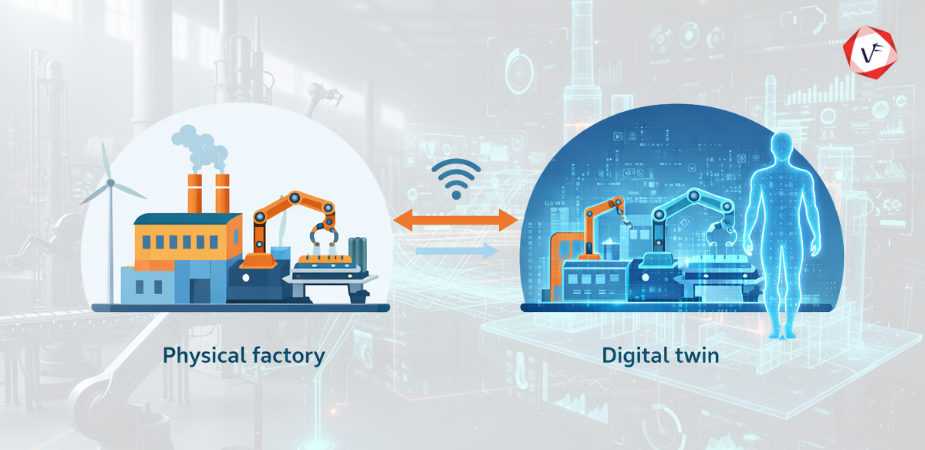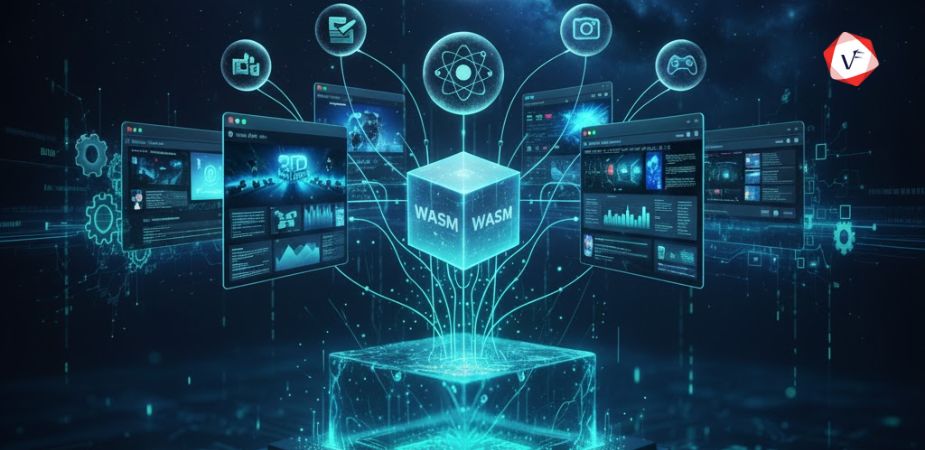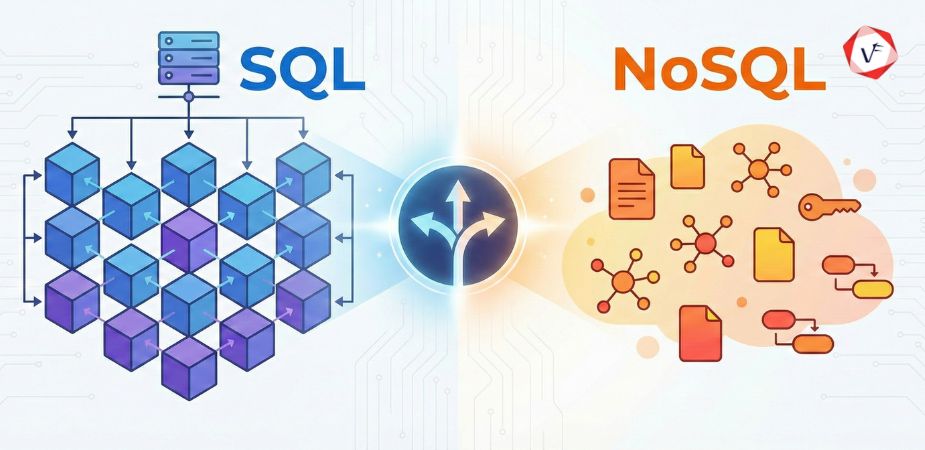- June 07, 2023 6:01 am
- by Ajanth
- June 07, 2023 6:01 am
- by Ajanth

The eCommerce industry is expanding and will soon undergo remarkable development. It significantly alters consumer behavior, demands, and purchasing patterns. In almost 25 years, this market has generated global revenues of more than 2 trillion US dollars. The adoption of new technology, extensive customization, regulatory evolution, and innovative incorporation with cutting-edge solutions has completely transformed the eCommerce sector. The Covid-19 pandemic completely altered the landscape for online retailers, and the growing consumer demand will be here to remain. The U.S. Department of Commerce reports that, at its peak in Q4 of 2020, eCommerce represented more than 21.1% of total retail sales in the U.S., up from 14.8% at the start of 2019. The major e-commerce trends for the upcoming several years are listed below. Some currently exist in our everyday lives, but they will become more prevalent. It's a smart option to get prepared, even though some things are almost capable to become a reality and others will probably take some time to take root. The leading e-commerce trends that online businesses are likely to adopt in 2023 are the ones listed below.
Artificial intelligence has assisted in elevating the business opportunity for eCommerce or online stores. Your company will evaluate customer behavior and process information more effectively by incorporating AI technology. Also, AI has given users access to a variety of cutting-edge experiences. like digital assistants, personalized recommendations, visual searches, and more. The latest review by Business Insider predicts that chatbots will eventually handle more than 85% of client contacts. Personalization is one of the best uses of AI for organizations. Personalization entails customizing the user experience to reflect what the business has understood about them. According to a report, 80% of customers are more inclined to buy from a business again if they had a personalized purchasing experience. Starbucks is one of many online retailers that provide excellent personalization.
The concept of voice-enabled technology is quickly taking over in the eCommerce world. Voice assistants are predicted to take over internet shopping by 2023 Speech recognition technology is used in voice commerce to make it easier to buy and sell products and services. Rather than typing out keywords to place orders, shoppers are no longer required to do so. Many people use voice assistants to carry out regular tasks in addition to owning smart speakers. People will begin to use voice search to conduct online shopping, place food orders, and manage their daily lives as more people embrace smart speakers. For e-commerce companies, the rise of voice search opens up possibilities in regard to content and keywords.
The real, physical realm combines computer-generated sights, sounds, or other inputs in augmented reality (AR). Virtual reality (VR), on the other hand, is a simulation that uses specialized headgear to immerse the user in a setting that is artificially created yet appears to be real. To provide a more immersive buying experience, several eCommerce firms are implementing AR and VR technology. While deciding to make a purchase, e-commerce buyers can explore items or use services in their own environment and at their own pace due to augmented reality (AR). Customers who can view products using augmented reality are more likely to purchase the required item the first time. Because of the built-in interactivity of AR, it is simple for users to become engaged with your website. Also, the longer they spend on your e-commerce website, the greater the likelihood that they will buy something. In today's world, you must generate a buzz to capture the attention of the people. One approach to achieve it is to develop a compelling augmented reality campaign. Compared to a static image or even a video, AR allows businesses to provide buyers with a lot more details about an item. Together with 3D views, you may display how a product would appear in a customer's environment, lowering the likelihood that they will acquire the item only to discover it doesn't appear as expected. Consumers may be able to explore clothing racks using VR in a way that is similar to really being inside a store. Also, they could interact and purchase in real-time with people they met in the virtual world. One business leading the way for augmented reality is IKEA.
It is becoming increasingly important to provide customers with an omnichannel experience, and this will undoubtedly become a standard practice in e-commerce soon. The consumer acts in the most logical and convenient way by this. Whatever digital service or device your clients use, omnichannel e-commerce provides a seamless e-commerce experience. Due to the fact that 73% of internet users use numerous channels when making purchases, this is significant. With omnichannel e-commerce, your business can collect and combine client details through different channels. When you combine these data, you get a complete view of the kind of clients who have an interest in your product and its activities, giving you the ability to tailor your customer experience. You can only customize your clients' experiences by comprehending the user experience. You can develop a tailored experience using omnichannel e-commerce. Considering omnichannel clients have a 30% greater overall value than customers who only use one channel to make purchases, personalizing the experience for them is essential.
Establishing a company that promotes environmentally sustainable procedures, from sustainable packaging to more eco-friendly shipment, is necessary to achieve eCommerce sustainability. In addition to being the smart move to do for the environment, it also touches on a significant concern for many customers. In other words, turning green could increase your customer base and contribute to making the environment more healthy. Apple and Amazon, the two eCommerce behemoths, are introducing greater investments in sustainability. Moreover, 52% of customers globally acknowledged that the covid outbreak has increased their value for sustainable practices.
According to another survey, about 80% of consumers look at the feasibility of e-commerce platforms, goods, or brands before deciding to buy them. As a result, one of the several emerging trends in internet shopping is green commerce. The packaging and delivery of orders is a key area of attention. According to data, customers expect a healthier shopping experience than what the majority of companies now provide. Leading companies will need to adjust to this significant change in customer habits to boost efficiency in the upcoming eCommerce market.
Thrive Market, an online food store with a subscription model, is a fantastic representation of a sustainable eCommerce company. It offers products with responsible sourcing and delivers them to clients in carbon-neutral packaging. Also, its warehouses produce no waste.
Avoid losing out on potential clients by not supporting their favored payment methods on your website. Consider offering well-liked and novel payment options to get a good start on the future eCommerce trend. Providing mobile payment alternatives has become one of the most popular eCommerce trends worldwide as a result of the increasingly prevalent use of mobile devices. Due to rising customer expectations and the COVID-19 outbreak, the requirement for contactless payment has greatly expanded across the eCommerce sector. In the omnichannel eCommerce era, voice-based intelligent technologies are crucial because they enable contactless payments simple and rapid. E-commerce systems are now more prepared to receive payments from many streams and gateways due to payment diversification choices. Making transactions using credit and debit cards is now not needed by customers. Instead, customers can use a wider range of payment methods, such as net banking, UPI payments, and so forth. This feature has contributed to higher customer satisfaction and gives online shoppers a great deal of flexibility.
One of the major advancements in digital shopping is delivery drones, which will surely take a role in the e-commerce industry in the upcoming years. And, it would appear, a not-too-far scenario. Numerous businesses, including the food industry, are already testing drone delivery. Since 2013, the e-commerce behemoth Amazon has been working on its own delivery drone project. Drones will revolutionize operations by enabling quicker and more hassle-free deliveries. Companies will own and control their own drones, so they won't need to rely on outside providers to deliver items. Customers will receive their purchases at their doorsteps more quickly, which will enhance the customer experience. Systems will need a total redesign of supply chain procedures if drones start making deliveries. In most situations, drones will substitute for the role of carriers, necessitating the development of new technologies to connect goods with drones and load items onto the aircraft before they take off for various consumer locations. To handle these drones in accordance with aviation regulations and the industry's service standards, employees will need to be trained.
In order for headless commerce solutions to function, the backend architecture that supports an eCommerce experience must be separated from the frontend presentation layer of an eCommerce website or mobile app screen. Businesses may create high-quality content experiences using their choice frontend technology, and then combine an eCommerce system on the backend to control all aspects of commerce. The headless commerce strategy does not limit you to developing a single kind of customer experience, in contrast to traditional approaches. It is simpler to alter the content layer and less risky because you won't disrupt the core functionality because the front end and back end are separated. In today's eCommerce business, the ability to design unique and personalized experiences is essential. The ability to link several tools through an API is offered by headless solutions. APIs facilitate smooth data connections and exchanges while making it simple for software systems to interact with each other. The options for how users may employ the data are increased by this versatility, which also removes limitations.
CRM (customer relationship management) is a set of tools and tactics that eCommerce enterprises may use to control client engagement. 92% of clients would stop doing business with an organization after two or three unpleasant experiences, therefore having a strong CRM strategy is crucial. CRM helps business leaders interpret and understand the demands and behavior of their customers. As a result, connections are strengthened and a devoted consumer base is created.CRM refers to all the actions, plans, and tools businesses use to manage their past, present, and future relationships with customers. It's because many companies consider their customers to be king. Every solid business entity is aware of the value of CRM and how to use a CRM system effectively. They want to offer each and every one of their customers a tailored experience, thus they constantly use and invest in high-end CRM technologies. Most consumers want firms to offer them a personalized touch during their buying or advertising encounters. For e-commerce companies, maintaining this individualized plan is the most difficult task. Customer satisfaction has an influence on a company's revenue. As a result, the CRM management strategy contributes to increased business earnings.
E-commerce will likely undergo a lot of interesting developments and advancements in the future, influencing both consumers and businesses. The e-commerce sector is always changing and on the edge of transformation. E-commerce businesses must keep up with the most recent trends. Even if these are only a few trends, there are more that are making headlines in the eCommerce sector. Understanding your potential customers and business demands is crucial in such circumstances.
Studying the most recent trends and incorporating those that benefit your business and marketing strategy will help you remain one of the leaders in your industry. Be sure your platform for developing websites or your eCommerce platform offers you a robust selection of eCommerce capabilities and an architecture that is designed to accommodate these developments and any that may emerge, not to mention any possible challenges. Monitor your rivals, pay attention to the innovative methods they employ to reach clients, and give priority to implementing changes that will have the biggest positive effects on your bottom line.
Vofox Solutions is a leading offshore software development company in india that provides services including offshore and onshore resource augmentation. Vofox Solutions is a trusted ecommerce website development company in India using various platforms such as Magento, WordPress, Shopify, etc. Vofox Solutions helps its clients transform their business ideas into online stores that reach their target customers globally and increase their revenue.
Guaranteed Response within One Business Day!

What is Digital Twin Technology?

What are WebAssembly (WASM) Applications?
Code Review Best Practices: Complete Guide for 2026

Database Selection Guide: SQL vs NoSQL
AI Agents in Enterprise Software: How Autonomous AI is Transforming Business Operations